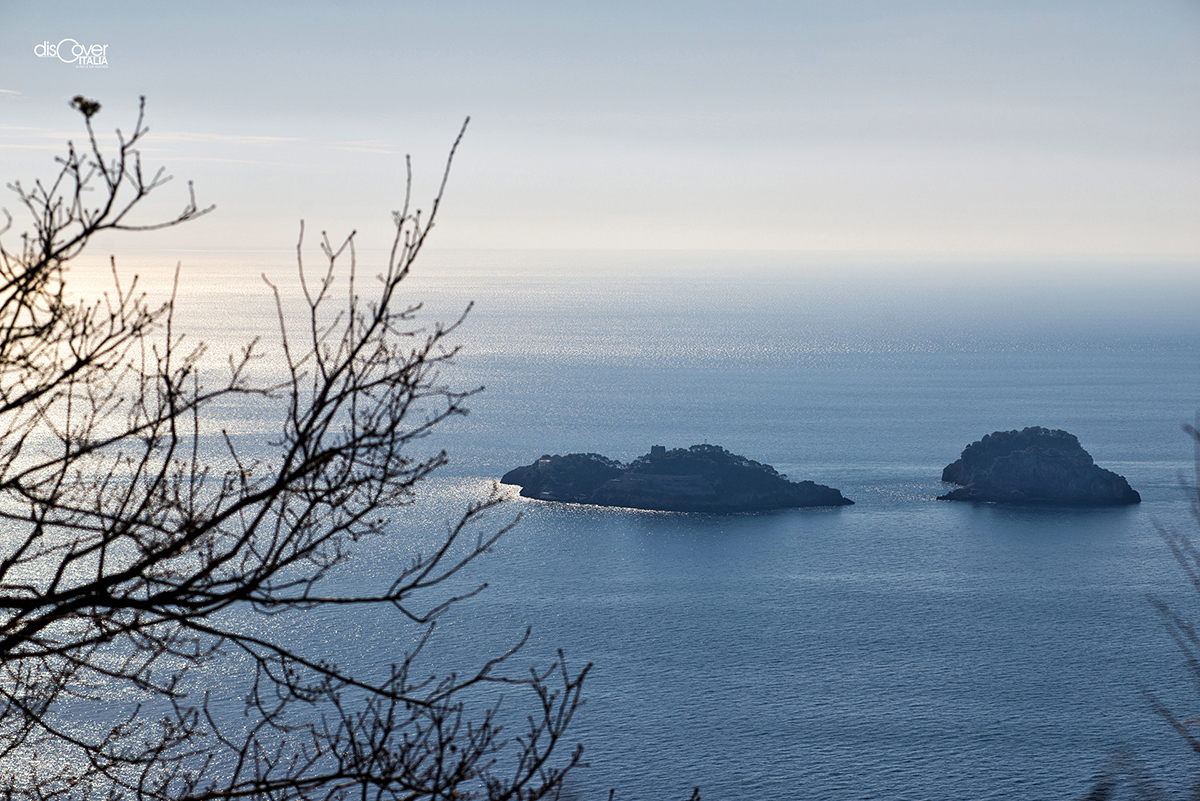Li Galli, the archipelago of the sirens
In spring, the yellow blooms of the daffodils colour the rich and low wild vegetation that covers the islands. The larger one, in the shape of a dolphin, which however has the name of Gallo Lungo.

And the other two accompanying it to the west, the Rotonda and, further north, the Castelluccia, also known as Isola dei Briganti (The Brigand’s island) because pirates stopped there to assail the ships passing through the Bocche di Capri. Three main islands, which together with the islet of Isca and the rocky spur of Vetara form Li Galli Archipelago, in the sea between Positano and Capri. Strips of land bringing together what was once united, the Peninsula and the Blue Island. In a stretch of sea exposed to very insidious currents for the boats that sailed on the route to Scilla and Cariddi, the Strait of Messina. And many ships interrupted their journey at that point, where the Sirens resided for the ancients.
Sirenai or Sirenussai, this is how Strabo described the islands in his “Geography”, because there, for the Greek mythology, Parhtenope, Leucosia and Ligea, the Sirens, sang their irresistible song which ensnared and lost the sailors. Only two ships survived the disaster: Ulysses’ one, who had covered his ears with wax in order not to hear them, and the Argonauts’ one, thanks to Orpheus who, playing the lyre, managed to overcome the song. Such was the shame that the three Sirens jumped into the sea and were transformed into rocks. And from their bodies half of a woman half of a bird, the islands took the name of Galli (Cocks). Already present in a document of 1131, which speaks about Guallo, while “Tre sirenas quae dicitur Gallus” were donatedto the monastery of Positano by Emperor Frederick II in 1225.
The largest island, 400 meters long, was inhabited during Roman times and there are remains of a villa and a seaside district. Around the middle of the Nineteenth century, a rabbit farm was established there, destroyed by a storm. Later, they were frequented for hunting trips, taking advantage of the passage of migration birds. But it was at the beginning of the twentieth century that the dancer and choreographer Leonide Massine fell in love with Li Galli, and bought them in 1924, building a villa the on Gallo Lungo. The villa was then remodeled by the great Le Corbusier. Massine transformed the Roman tower into a dance studio with an outdoor theatre. These works conquered another dance giant, Rudolf Nureyev, who bought the archipelago in 1989. After his untimely death, the islands remained private and still are today.
Li Galli archipelago is part of the Natural Marine Area of Punta Campanella.



Comments powered by CComment